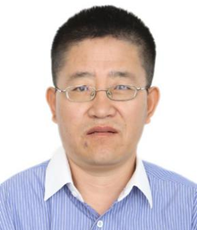Theory-Guided Electrocatalysis and Photocatalysis
A special issue of Catalysts (ISSN 2073-4344). This special issue belongs to the section "Computational Catalysis".
Deadline for manuscript submissions: closed (15 November 2023) | Viewed by 11133
Special Issue Editors
Interests: low-dimensional nanomaterial design and exploration of first principles
Special Issues, Collections and Topics in MDPI journals
Interests: two-dimensional nanomaterials; catalytic performance
Special Issues, Collections and Topics in MDPI journals
Special Issue Information
Dear Colleagues,
The present Special Issue of Catalysts is aimed at presenting the recent development of theory-guided electrocatalysis and photocatalysis, and researchers working in the field are cordially invited to contribute.
Original articles dealing with electrocatalyzing and photocatalyzing CO2 reduction, N2 reduction, oxygen reduction/revolution, and hydrogen revolution reactions by means of theoretical computations are welcome.
Prof. Dr. Fengyu Li
Prof. Dr. Jingxiang Zhao
Guest Editors
Manuscript Submission Information
Manuscripts should be submitted online at www.mdpi.com by registering and logging in to this website. Once you are registered, click here to go to the submission form. Manuscripts can be submitted until the deadline. All submissions that pass pre-check are peer-reviewed. Accepted papers will be published continuously in the journal (as soon as accepted) and will be listed together on the special issue website. Research articles, review articles as well as short communications are invited. For planned papers, a title and short abstract (about 100 words) can be sent to the Editorial Office for announcement on this website.
Submitted manuscripts should not have been published previously, nor be under consideration for publication elsewhere (except conference proceedings papers). All manuscripts are thoroughly refereed through a single-blind peer-review process. A guide for authors and other relevant information for submission of manuscripts is available on the Instructions for Authors page. Catalysts is an international peer-reviewed open access monthly journal published by MDPI.
Please visit the Instructions for Authors page before submitting a manuscript. The Article Processing Charge (APC) for publication in this open access journal is 2700 CHF (Swiss Francs). Submitted papers should be well formatted and use good English. Authors may use MDPI's English editing service prior to publication or during author revisions.
Keywords
- electrocatalysis
- photocatalysis
- computations
- efficiency
- mechanism






